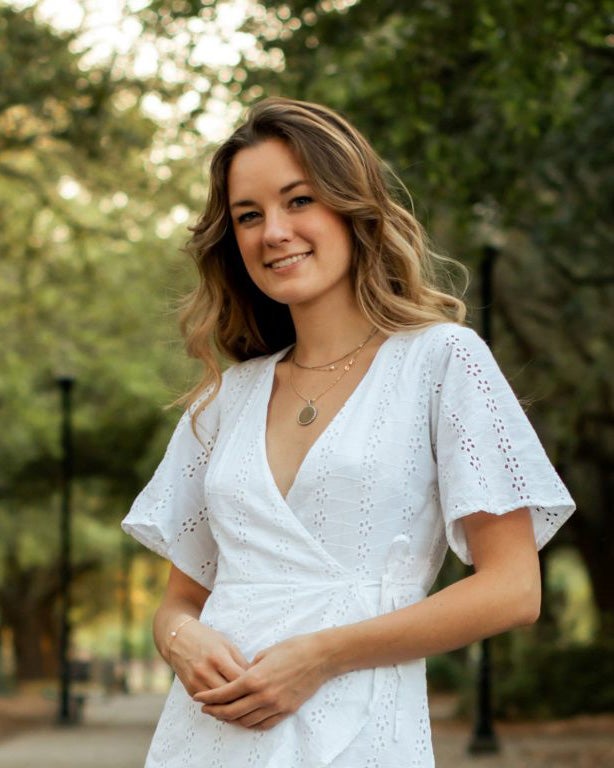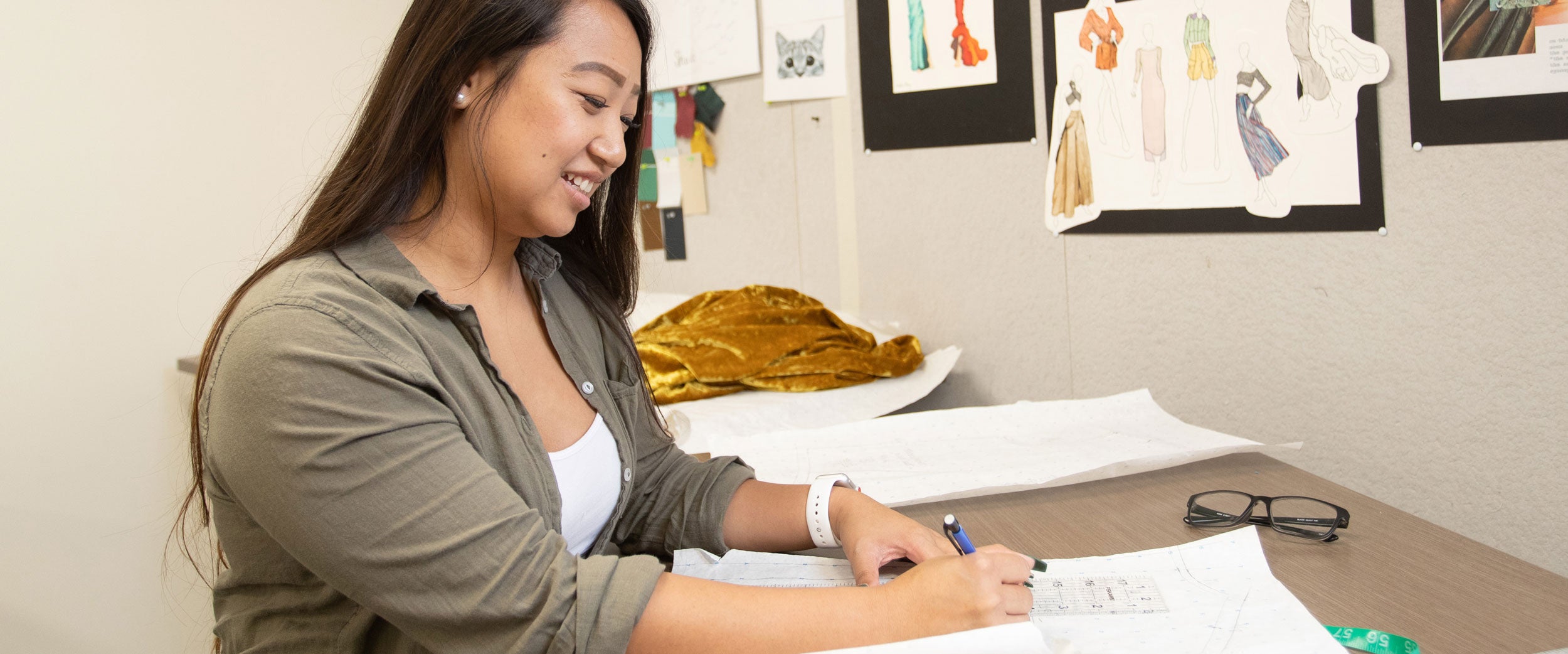We spend most of our lives indoors. With a Bachelor of Science in Interior Design from Georgia Southern University, you’ll learn to blend art and science to improve the way humans live and work.
Locations
- Statesboro Campus (In Person)
Why Earn a Bachelor’s in Interior Design From Georgia Southern?
- #1-ranked CIDA-accredited public school in Georgia.
- Small classes: Most studio classes have no more than 24 students.
- Learn with pro-grade software in an excellent building.
- Visit with vendors and prominent design firms.
- 124 credit hours to completion.
At one point, interior design revolved primarily around looks. That’s changed: Today, interior designers focus on crafting spaces that improve the way people work and live. While aesthetics remain a factor, every successful designer’s work places human needs at the center.
As a student in Georgia Southern University’s Bachelor of Science in Interior Design program, you’ll focus on evidence-based design. This practice calls for you to use the best available research on health and safety, environmental sustainability and other user-focused factors as you craft environments that perform as well as they look. You will be ready to create interior settings that protect the health, safety and welfare of the public after you are qualified through education, experience and examination.
Ready to Apply?
What Can You Do With a Bachelor’s in Interior Design?
Our graduates aren’t just designers — they’re problem solvers. The skills you gain qualify you for an almost endless list of careers: Some of our students go on to be interior designers or interior architects, but others pursue work in historic preservation, lighting and set design, and more creative endeavors.
Whatever you do, a Georgia Southern degree speaks volumes. We’re accredited by both the Council for Interior Design Accreditation (CIDA) and the National Association of Schools of Art and Design — designations that employers everywhere recognize.
Where our graduates work:
- 24e Design Co.
- Circa Lighting
- HLG Studio
- Gensler
- Gulfstream Aerospace
- Office Images
- Randall-Paulson Architects
What our graduates do:
- Architectural Drafter
- Art Director
- Cost Estimator
- Interior Designer
- Kitchen and Bath Designer
- LEED Specialist
- Textile Designer
What You’ll Learn
Your interior design studies start by bolstering your skills in drawing, two- and three-dimensional design, and design appreciation. Then, you move on to a series of six interior design studio courses, during which you’ll develop increasingly complex residential and commercial spaces — culminating in a capstone project that showcases what you’ve learned. In addition to working with Revit and other software, the program will explore:
- Sustainability strategies
- Creative problem solving
- Communication techniques
- Global and cultural perspectives
- Human behavior, health and wellbeing
- Building materials and finishes
- Building systems and construction
- Life safety, codes and universal design
- Professional business practices and ethics
- Programming and site analysis
- Research-informed evidence-based design
- Space planning
Build Your Experience
As a future interior designer, you’re responsible for bringing a vision to life. We make sure you get the hands-on experience to do that.

Service Learning
We go beyond merely looking at case studies. You’ll go off campus with your professors to examine areas, institutions and community issues in the world around us.

Internships
To get the most out of your mandatory internship, you’ll prepare for the experience one-on-one with a faculty member. Design charrettes, service learning and other hands-on opportunities are further woven into the program.

Study Abroad
Great design is everywhere. You can see for yourself when you study abroad. Get more information from USG Goes Global or the Office of Global Engagement.
Want to Learn More?
Explore essential information about our BS in Interior Design program, including application details, accreditation status, and licensing disclosures. Gain insight into the program’s credibility and requirements to help you start your journey toward success with the knowledge you need.
Admission to the interior design program requires a separate application. You must first gain admission to Georgia Southern and declare interior design as your major before completing the interior design application.
Follow these steps to complete the Georgia Southern application:
- Create an application account.
- Complete our online application using the PIN you received after creating your application account.
- Once complete, pay the $30 application fee or upload a valid fee waiver. Previous Georgia Southern applicants and dual enrollment students do not need to pay the fee.
- You can check your application status at My.GeorgiaSouthern.edu/admissions three days after completing your application. This page contains live information about your admission status, including a checklist of missing documents we need to make a decision.
The interior design application is available online and is available in March (for fall start) and October (for spring start). You must complete the first semester of your freshman year before applying to the program. See other minimum admission requirements.
Complete the Interior Design ApplicationThe interior design program leading to the Bachelor of Science degree in Interior Design is accredited by the Council for Interior Design Accreditation, 206 Grandville Avenue, Suite 350, Grand Rapids, MI, 49503. Georgia Southern University has held accreditation by the Council for Interior Design Accreditation (CIDA, formerly FIDER) since 2000. We have been reaccredited through 2029. “Achieving accreditation is a strong signal of a program’s commitment to delivering a quality professional-level education that prepares students for entry-level interior design practice” (CIDA).
The interior design program is also accredited by the National Association of Schools of Art and Design (NASAD). We are also an affiliated school with the National Kitchen and Bath Association.
Related Programs

Take the Next Step
Pursue a career in residential or commercial interior design in a program that puts humans first. Learn more today.




